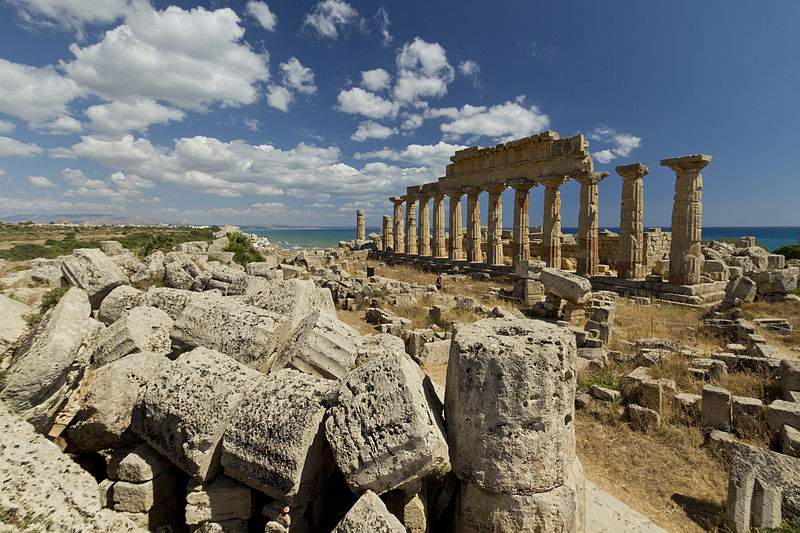Natural environments, and more, dating back 2,700 years have been found in Selinunte. The discovery was made by geologists from theUniversity of Camerino through an advanced and promising technique born from the meeting of geomorphology and archaeology.
"Using a high-sensitivity thermal camera, loaded on the drone, geologists from the University of Camerino have detected on the ground of the archaeoogical area of Selinunte, some thermal anomalies attributable to important buried structures of about 2700 years ago that descend from the ’Temple M’ towards the harbor," announced Fabio Pallotta, consultant geoarchaeologist at the University of Camerino of the Selinunte Archaeological Park.Research has led to the discovery of pipes built by the Greeks to bring water to homes. In practice, this is an authentic water system, which will be presented later today.
“Verisimilarly,” Pallotta adds, "it was a succession of temples and tanks filled with clear spring water that flowed toward the African sea to offer precious refreshment to border travelers. From these thermal images everyone can observe how the heat gradient delineates in the ground perfect geometric patterns surrounding precisely the remains of the so-called ’Temple M,’ now located along the right bank of the Selino River, but which originally stood out with all its beauty on the extreme western promontory of the enchanting lagoon."
“Even the Greeks carried out detour of waterways.” comments Marco Materazzi, a geomorphologist at the University of Camerino. “The studies conducted so far at Selinunte have made it possible, in the first place, to reconstruct what must have been the ancient shoreline at the time of the city’s greatest expansion Greek, highlighting the presence of two harbors located immediately to the east and west of the Acropolis of Selinunte and confirming, integrating them, the hypotheses already formulated by archaeologists Hulot and Fougères in the early twentieth century.”
"Selinunte was the megalopolis of western Sicily," explained Enrico Caruso, director of the Archaeological Park of Selinunte and Cave of Cusa and acting superintendent of the Cultural and Environmental Heritage of Trapani, “and, for the first time, we are reconstructing the natural environment in which it was founded and became great. Certain that its strength, represented by the waterways and heights that made it beautiful and powerful for just over two centuries, was also its fragility: the city was destroyed in 409 by the Carthaginians in ten days.”
On Wednesday, Jan. 17, the park director will discuss the findings and technical-scientific aspects on site with Vittorio Sgarbi and the rector of the University of Camerino, Claudio Pettinari.
Image: the Temple C of Selinunte. Ph. Credit Franck Manogil
 |
| A water system built by the Greeks discovered in Selinunte |
Warning: the translation into English of the original Italian article was created using automatic tools. We undertake to review all articles, but we do not guarantee the total absence of inaccuracies in the translation due to the program. You can find the original by clicking on the ITA button. If you find any mistake,please contact us.